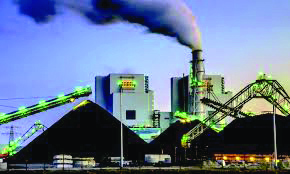Thermal power plants in Bengal emit 18 times more air pollution than stubble burning: Study

Kolkata: Recommending installation of flue gas desulfurization (FGD) systems in Bengal’s coal-fired thermal power plants to combat the soaring sulphur dioxide (SO₂) emissions, a recent study report revealed that thermal power plants in Bengal emit 18 times more air pollution than stubble burning.
The study by the Centre for Research on Energy and Clean Air (CREA) points out that presently none of the 14 thermal power plants in Bengal have installed FGD systems. It revealed that the total SO₂ emissions from thermal power plants in Bengal is 313 kilotonnes per year. The FGD systems can reduce this to 113 kilotonnes with an overall reduction of 64 per cent. In Bengal, thermal power plants emit 18 times more SO2 than what is released from burning 8.9 million tonnes of paddy straw. India is currently the world’s largest SO₂ emitter, responsible for over 20 per cent of global anthropogenic SO₂ emissions, primarily due to its coal-dependent energy sector.
The FGD, if installed in Farakka plants which emit 46 kilotonnes, can reduce emissions by 73 per cent. Haldia emitting 44 kilotonnes will see 82 per cent reduction. Santaldih, with current SO₂ emissions of 22 can achieve 85 per cent reduction. Durgapur Steel (24 kilotonnes) and Raghunathpur (24 kilotonnes) both could reduce emissions by 80 per cent.
Data on FGD installation progress for all power plants in India has not been updated since November 2023 on the Central Electricity Authority (CEA) website, with the latest available status data only from October 2023.
Manoj Kumar, analyst CREA said: “The health and economic benefits of FGD far outweigh the costs, offering a pathway to improved public health and cleaner air.”



